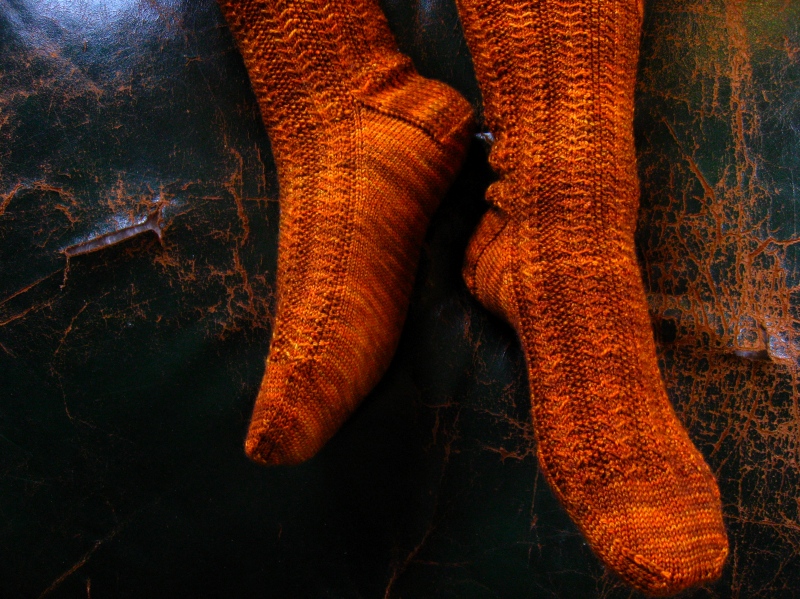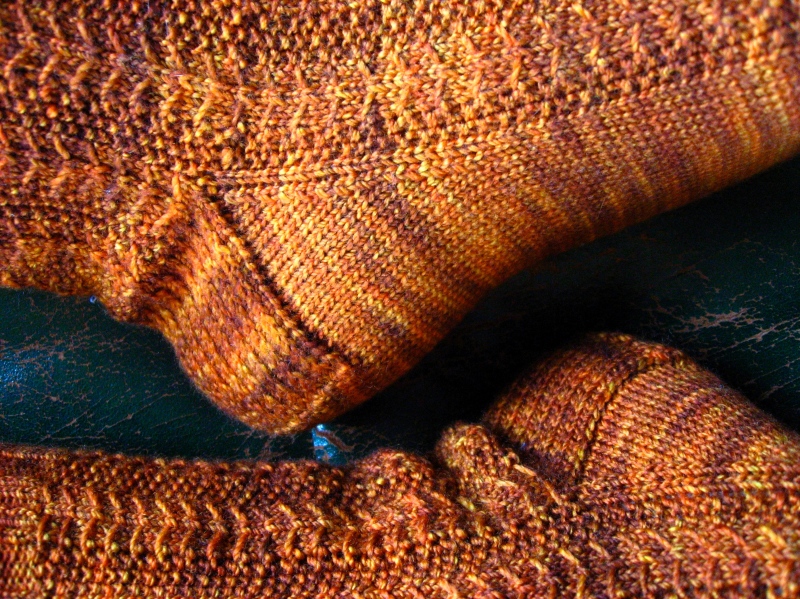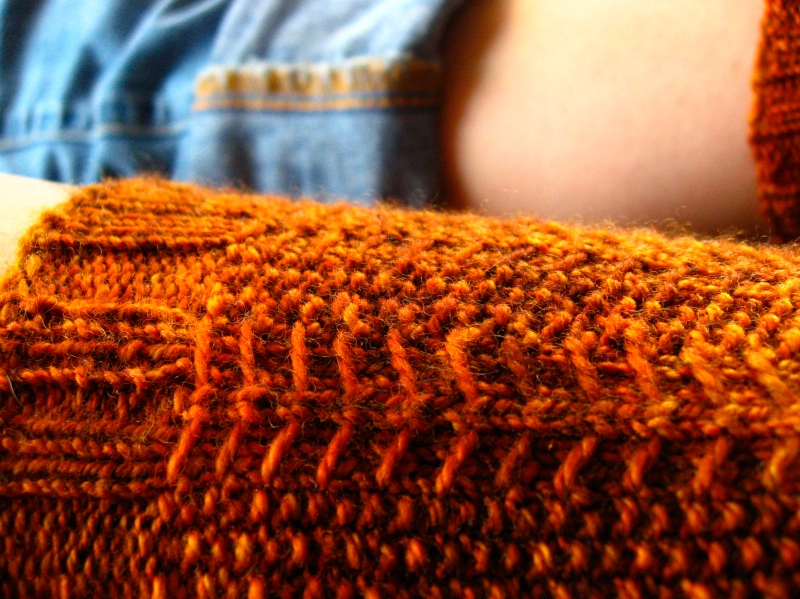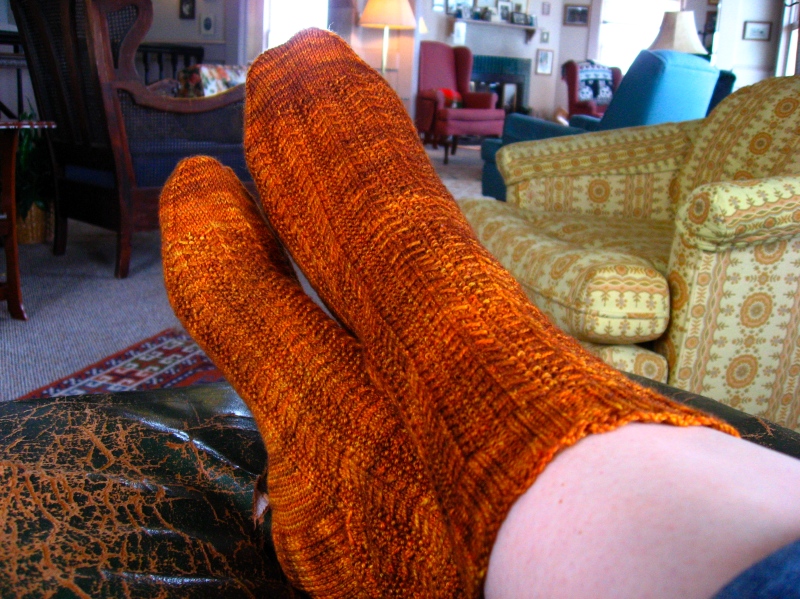I'd been meaning to rework the Paul Atwell Socks pattern for a while, and this week I finally got around to it. The new version, complete with five sizes rather than two, and more, shall we say, realistic sizing, is up on Ravelry and the Family Trunk Project site, and should have gone out to all previous purchasers earlier today. If you bought or traded for the pattern and haven't received the updated version, please email me and I'll send it your way. And sincere apologies to anyone who was inconvenienced by the issues with the original version; I really hope you enjoy the update.
The problems with this pattern were down to a combination of things. Primary among them was my lack of experience in pattern-writing (it was only my second pattern, and I had knitted many fewer socks than sweaters). I think the re-do benefits immensely from all the patterns I've written in the meantime; I've become more careful about mistakes and better able to spot a result that seems "off." But in addition, and this bears more careful thought, there is the issue of gauge.
I'm a pretty firm knitter, and usually have to go up one or two needle sizes in order to get gauge when I'm knitting other peoples' patterns. My regular, go-to number of stitches for foot and ankle when I'm knitting socks is 72, whereas I know many people whose standard sock measures only 60 stitches around. Normally with written patterns this shouldn't be a problem, because the proper gauge is given. However, I suspect two things:
1. People don't swatch for socks.
2. Even if they swatch, if they are a loose knitter and I got a certain gauge on size 1's, they are going to have a hard time finding sufficiently minuscule needles to reproduce that gauge. And even if they can, are they really going to have fun knitting a garment on size 000's? Likely the answer is no.
The latter point makes me pretty sad, actually. Because I really enjoy knitting on size 1 needles, and not only socks: the body of the Betty Jean McNeil sweater was knit on 1's, with the colorwork section worked on 2's. I have another sweater project in the works right now on 1's. But I don't want to make patterns that are inaccessible to loose knitters. For socks, I can easily make my version of the pattern the large or medium size, and draft a version with a cast-on closer to 60 stitches as the smaller size (Paul Atwell now features initial cast-ons of 64, 72, 80, 88 and 96). But for sweaters, sizing is more complex and simply going down a size is not always practical. It's a vexing problem.
For now, I will probably back off the tiny-gauge sweaters a bit, and trust to the magic of yarn substitution and going down a size to ensure that the tiny-gauge patterns I've already written (or am in the process of writing) won't be rendered totally useless. And if you have any questions or comments about adapting one of my patterns for a looser gauge, don't hesitate to get in touch.
Okay, enough photo-less meta posting! I seized a few seconds of sunlight in between the torrential rainstorms we've been having to snap a few photos of half a sewing project; I'll be back tomorrowish to show them off.



